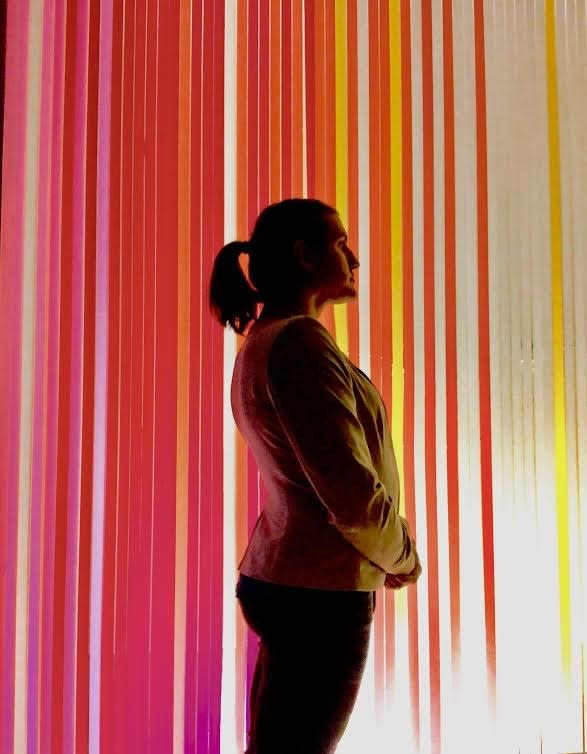It’s Just Hair, but When You’re a Trans Woman, a Ponytail Can Mean a Whole Lot More
When I was in kindergarten—and very much in the closet as transgender—I had begun to crave a ponytail like the ones I saw on many of the girls in my class. I’m well aware that for many girls and women, the ponytail is a “bare minimum” style, often for lazy days, but the girls I saw in my class emulated the women I saw on television who were strong, confident, and successful. I thought they were cool, and I understood immediately I could never have one.
Even at six, I knew better. I was raised in deeply conservative Texas, in a world with firmly cemented gender roles. I was a boy and I had better keep to “boy things.” The bouncy ponytail of my dreams? Not a boy thing.
In 1999, when I was 12, the U.S. Women’s National Team won their second World Cup, and Mia Hamm became a personal icon. For weeks I dreamed of what it would be like to have the freedom to sport a ponytail like Hamm's. By then I was fully aware of a desire within me to be a girl, but I kept it buried in the back of my brain, suppressed whenever possible. Still, it sometimes crept up, summoned by the most mundane signifiers of femaleness. Mia Hamm was confident and beautiful and successful, and although I had no sense of what womanhood meant to me, I couldn’t help but feel that her hair represented all the things I was missing. I wanted an authentic life. I wanted to feel confident. I wanted a ponytail.

I got through high school by pushing these thoughts down deep and leaning into whatever “male” things I could stomach. I played football. I engaged in some sort of half-hearted male performance when I interacted with relatives, including one who told me to “stop listening to faggot music” and was deeply upset after I purchased a scented lotion from Bath & Body Works. I joined the military—and even went into the infantry, which at the time coincidentally excluded women.
I did the things I was told a “male person” should do, believing I’d eventually be cleansed of this painful longing. Instead the facade exacerbated my depression and anxiety. I went to therapy for years, had numerous uncomfortable conversations, and came out as a trans woman in late 2017. It is the best choice I’ve ever made. It saved me.
But it took my hair took a lot longer to catch up with the new me. I’d grown accustomed to army-issue crewcuts, which grow out fast. It didn’t occur to me immediately that the hair I’d dreamed of would take years to come in, and I didn’t feel confident enough to wear a wig. So I had to wait it out, for over a year, fiddling with my hair after a shower to see if it was long enough yet and consistently bummed when it wasn’t quite there.
I hadn’t tried putting my hair up in months when one evening in late July, I absentmindedly grabbed a hair tie off my shelf and made a go of it. After some awkward handling and smoothing of rogue strands, I adjusted the band high on the back of my head and turned toward the mirror. I don’t know how to adequately articulate the combination of happiness and relief I felt in that moment. It’s just hair, I thought. But then I glimpsed the waves, how the strands bundled together so beautifully. I couldn’t help it. I got emotional.
Here I stood on a summer night, with a life my six-year-old self wouldn’t have dared to imagine. I’m 32 now and old enough to admit my anxiety over seemingly trivial things. I think some part of me was worried this thing I’d wanted for more than 25 years would look terrible once I finally got it. I’m pleased to report: It was perfect.
A ponytail doesn’t define or essentialize womanhood, nor does any other hairstyle. A woman wears her hair how she wants and defines womanhood for herself. But when I was a trans girl in the closet, it was a real and tangible symbol of something I knew even then I wanted. Women like Mia Hamm, full of confidence and ambition, wore their hair in a way that spoke to that girl in Central Texas who felt lonely and insecure and terrified for the future.
Every week I get messages from parents of trans children who say they show pictures of me to their kids on particularly bad days, and it never fails to humble me. These are kids who watch adults on television tell them that their desired gender expression is unhealthy and unwelcome. Once upon a time, I was that kid.
I want to live in a world where everyone can be themselves, where a child shouldn’t have to negotiate the histrionic social hangups and mocking of the adults around them. And the easiest thing I can do to make that happen these days is to put my hair up and walk outside my door and into the public square, past those same adults and their children, with authenticity and confidence.
Charlotte Clymer is a press secretary at the Human Rights Campaign. She is a writer, military veteran, and proud transgender woman living in Washington, D.C.
Originally Appeared on Glamour
